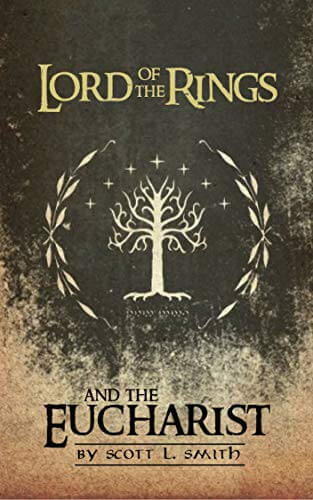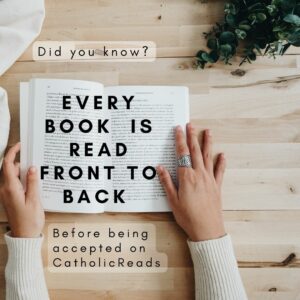Genre
Audience
Author’s Worldview
Catholic
Year Published
2019
Themes
Reviewed by
Even a casual audience member of Lord of the Rings – books or movies – is struck by the depth of the lore. It’s not an overstatement to say that Tolkien’s fantasy world is fully fleshed out and genre-defining. But not everyone knows about Tolkien’s strong Catholic faith and how those influences show up in Middle Earth. If you’re a Tolkien fan and a Catholic, Scott L. Smith, Jr. has written an approachable book for you. Lord of the Rings & the Eucharist is a brief volume exploring the similarities between Middle Earth and Catholicism. Containing discussion of the movies, books, and extended legendarium, this collection of essays is informative, thought-provoking, and well-researched.
Topics include understanding the Eucharist, the Garden of Eden, Kingship, Ents, and more. It bridges events from the Trees of early Middle Earth history to Frodo’s need for lembas waybread, the Tolkien parallel to the Eucharist. There’s also an assortment of artwork throughout the book taken from the movies and editions of the novels—and the art of Middle Earth is always breathtaking. Smith also includes a bonus chapter on Star Wars. On the one hand, it feels out of place, but on the other hand, it has the most important discussion in this book about why Catholicism parallels so well with these popular works of literature. The heroic story structure that both Luke and Frodo follow are based on ancient myths, which in a sense primed humanity for the life of Christ.
It’s an understatement to say that Tolkien’s Middle Earth lore is dense. Smith doesn’t expect the reader to know everything. He tries to keep it straightforward enough that even if you only know the movies and the basic story of “Frodo must destroy ring,” you’ll be able to follow the analysis. I’ll admit, however, that trying to keep the names straight can still be a challenge. I read the Silmarillion some years ago, and I really had to focus to remember the names and connections from time to time. The best audience would be Catholic fans who want to delve deeper into the lore, but haven’t had a chance to and are looking for an approachable text to get started. Although the book has sources and endnotes, the writing is far from academic.
Curious Protestant and Secular fans of Lord of the Rings will still be engaged if they’re interested in literary analysis. Secular readers might be critical of the interpretation that this is the only or even the best way to read Tolkien, but the book still provides useful talking points.
While I—like other fans—may object to Tolkien and allegory being written in the same sentence, it’s worth it to set aside that bias and take the work on its own terms: the connections that one reader makes between Christianity and Lord of the Rings. Tolkien himself even allowed that stories and allegories converge in Truth, as Smith quotes in his chapter discussing this issue. You’ll find many parallels that add richness to the influences Tolkien undoubtedly drew upon to form his genre-defining world. And you may be convinced that the many points Smith raises build a case for seeing the lore of Middle Earth as an entire Biblical and Catholic allegory.
The conversation about religious influences in Lord of the Rings is still ongoing, but this book has enough gems for all levels of nerds to get something out of it.




